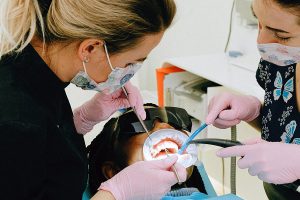1. Executive Summary
The European mother and baby market, valued at approximately $425.142 billion, stands as a significant global economic force. Despite a decline in the birth rate, it is projected to grow steadily, buoyed by factors such as high consumer spending power, a growing focus on child health and well – being, and technological advancements in baby products.
The market is highly fragmented, with intense competition among local and international brands. German and French markets are particularly prominent, driven by high consumer demand and economic stability. E – commerce is emerging as a key sales channel, with mobile commerce expected to account for over half of total transactions by 2024.
Product innovation, especially in safety, sustainability, and functionality, is a major market trend. Parents are increasingly willing to pay a premium for products that offer advanced features and ensure the health and safety of their children. Additionally, there is a growing demand for personalized and customized baby products, as well as for products that support the well – being of mothers during pregnancy and after childbirth.
However, the market also faces challenges, including economic uncertainties, regulatory complexities, and intense competition. To succeed in this market, companies need to focus on product innovation, brand building, and effective digital marketing strategies. They must also be prepared to adapt to changing consumer preferences and regulatory requirements.
2. Market Overview
2.1 Definition of the Mother and Baby Market
The mother and baby market encompasses a wide range of products and services designed to meet the needs of expectant mothers, new mothers, and babies from birth through early childhood. This includes prenatal care products and services, baby clothing, diapers, feeding equipment, nursery furniture, baby care products (such as lotions and shampoos), toys, strollers, car seats, and educational materials. The market also extends to services like maternity photography, baby – sitting, and parenting classes.
2.2 Size of the European Mother and Baby Market
The European mother and baby market is substantial, with a value of around $425.142 billion. Germany alone contributes significantly, with its market valued at $25.2534 billion. The market has shown resilience and growth over the years, despite facing some demographic headwinds such as a declining birth rate in many European countries.
2.3 Growth Trends
1. **Historical Growth**
– Over the past decade, the European mother and baby market has experienced a compound annual growth rate (CAGR) of approximately 3 – 4%. This growth has been driven by several factors, including an increase in disposable income in many European countries, a growing awareness of the importance of high – quality baby products for child development, and the entry of new and innovative players into the market.
– For example, the market for organic baby food has seen a significant increase in sales, with a CAGR of around 8 – 10% over the past five years. This growth is attributed to parents’ growing concern about the quality and safety of the food their children consume.
2. Projected Future Growth
– Looking ahead, the market is expected to continue growing, albeit at a somewhat slower pace. The projected CAGR for the next five years (2025 – 2030) is estimated to be around 2 – 3%. This growth will be supported by factors such as the increasing adoption of e – commerce platforms for purchasing baby products, the development of new and improved products, and the expansion of international brands into emerging European markets.
– However, the growth rate may be tempered by the ongoing decline in the birth rate in many European countries. For instance, countries like Italy and Spain have some of the lowest fertility rates in Europe, which could potentially limit the growth of the mother and baby market in these regions.
3. Market Drivers
3.1 Demographic Factors
1. Declining Birth Rate and Its Impact
– The overall birth rate in Europe has been on a downward trend in recent decades. In 2023, the total fertility rate (TFR) in the European Union was around 1.5 children per woman, well below the replacement level of 2.1. This decline is due to various factors, including increased female participation in the workforce, higher education levels among women, and a shift in social attitudes towards family planning.
– However, it’s important to note that the impact of the declining birth rate on the mother and baby market is not entirely negative. While there are fewer babies being born, parents are spending more per child. They are willing to invest in high – quality products and services to ensure the best start in life for their children. For example, in countries like Germany and the United Kingdom, the average spending on baby products per child has increased by 10 – 15% in the past five years.
2. Aging Population and Its Influence
– Europe has an aging population, with the proportion of people aged 65 and over increasing steadily. This demographic shift has several implications for the mother and baby market. On one hand, grandparents are becoming more involved in the lives of their grandchildren and are often willing to contribute to the purchase of baby products. In fact, a recent study in France found that grandparents account for approximately 20 – 25% of the total spending on baby products in the country.
– On the other hand, an aging population may lead to increased pressure on social welfare systems, which could potentially impact government policies related to family support, such as parental leave benefits and child – care subsidies.
3.2 Economic Factors
1. Consumer Spending Power
– Europe has a high – income consumer base, with many countries boasting a high GDP per capita. In countries like Switzerland, Norway, and Luxembourg, the GDP per capita is well over $80,000. This high level of disposable income allows parents to spend more on baby products and services.
– For example, in the luxury baby stroller segment, European consumers are more likely to purchase high – end models with advanced features such as all – terrain wheels, high – quality leather seats, and smart – technology integration. Brands like Bugaboo and Silver Cross have a strong presence in the European market, catering to consumers who are willing to pay a premium for quality and style.
2. Economic Stability and Its Role
– Economic stability in Europe, although facing some challenges in recent years due to factors such as Brexit and the COVID – 19 pandemic, still provides a favorable environment for the mother and baby market. Stable economies give consumers confidence in making long – term purchases, such as nursery furniture and baby car seats.
– For instance, during periods of economic stability, consumers are more likely to invest in larger – ticket items. In Germany, which has a relatively stable economy, the sales of nursery furniture have remained steady, with an annual growth rate of around 2 – 3% in recent years.
3.3 Social and Cultural Factors
1. Changing Parenting Styles
– There has been a significant shift in parenting styles in Europe in recent years. Modern parents are more focused on child – centered parenting, which emphasizes the individual needs and development of the child. This has led to an increased demand for products that support child development, such as educational toys, baby monitors with advanced features like sleep tracking, and ergonomic baby carriers.
– For example, the market for Montessori – inspired toys has seen a surge in popularity in European countries. These toys are designed to promote independent learning and sensory development in children, aligning with the modern parenting philosophy.
2. Increasing Awareness of Child Health and Well – being
– European consumers are becoming more aware of the importance of child health and well – being. This awareness has led to a growing demand for products that are safe, non – toxic, and environmentally friendly. Parents are willing to pay more for baby products that are made from natural materials, such as organic cotton for baby clothing and bamboo for baby diapers.
– In addition, there is a greater emphasis on mental health and well – being during pregnancy and early childhood. This has resulted in an increased demand for products and services that support maternal mental health, such as prenatal yoga classes and postpartum support groups.
3.4 Technological Factors
1. Innovation in Baby Products
– Technology has played a significant role in the innovation of baby products. Smart baby monitors that can track a baby’s sleep patterns, breathing, and temperature are becoming increasingly popular. These monitors often connect to a smartphone app, allowing parents to monitor their baby from anywhere.
– Another example is the development of self – sterilizing baby bottles, which use UV – C light technology to kill bacteria and viruses. These innovative products are appealing to parents who are looking for convenience and enhanced hygiene.
2. E – commerce and Its Impact on the Market
– The growth of e – commerce has transformed the way European consumers purchase baby products. Online platforms offer a wider range of products, competitive prices, and the convenience of home delivery. In 2024, it is estimated that online sales of baby products in Europe accounted for approximately 30 – 35% of total sales, and this proportion is expected to increase to over 40% by 2026.
– Marketplaces like Amazon and Alibaba’s AliExpress have a significant presence in the European baby product market, while many local e – commerce platforms also thrive. Additionally, the rise of mobile commerce means that more consumers are using their smartphones to make purchases, leading to the development of user – friendly mobile apps by retailers.
4. Market Segmentation
4.1 By Product Type
1. Baby Clothing and Footwear
– The baby clothing and footwear segment is a significant part of the European mother and baby market. In 2024, it accounted for approximately 20 – 25% of the total market value. This segment is driven by factors such as changing fashion trends for babies, the demand for comfortable and safe clothing, and the growth of online retail.
– Consumers are increasingly looking for baby clothing made from natural and organic materials, such as organic cotton and bamboo. Brands that offer sustainable and ethically produced baby clothing are gaining popularity. For example, brands like Frugi in the UK and Petit Bateau in France are known for their high – quality, eco – friendly baby clothing.
– In terms of footwear, there is a growing demand for soft – soled shoes that support a baby’s foot development. Brands like Bobux and Start – Rite offer a range of baby and toddler shoes designed with the latest in foot – health technology.
2. Diapers and Baby Care Products
– The diapers and baby care products segment is another major part of the market, accounting for around 15 – 20% of the total market value. The diaper market in Europe is highly competitive, with both disposable and reusable diapers vying for market share.
– Disposable diapers still dominate the market, but the demand for reusable diapers is growing steadily, driven by environmental concerns. Brands like Pampers and Huggies are leading players in the disposable diaper market, while brands like Bambino Mio and TotsBots are popular in the reusable diaper segment.
– In the baby care products category, items such as baby lotions, shampoos, and wipes are in high demand. Consumers are increasingly looking for products that are free from harsh chemicals and are suitable for sensitive baby skin. Brands like Aveeno Baby and Johnson’s Baby offer a range of gentle baby care products.
3. Feeding Equipment
– The feeding equipment segment includes products such as baby bottles, breast pumps, high chairs, and feeding utensils. It accounts for approximately 10 – 15% of the total market value.
– With the increasing number of working mothers, the demand for breast pumps, especially portable and electric ones, has been on the rise. Brands like Medela and Spectra are well – known for their high – quality breast pumps.
– In the baby bottle market, there is a growing demand for bottles that are designed to reduce colic and promote natural feeding. Anti – colic bottles with innovative nipple designs are popular among parents. Additionally, high chairs with adjustable features and easy – to – clean materials are in demand.
4. Nursery Furniture
– The nursery furniture segment, which includes baby cots, cribs, dressers, and changing tables, accounts for around 10 – 15% of the total market value. Consumers are looking for nursery furniture that is not only functional but also aesthetically pleasing and safe.
– There is a trend towards convertible baby cots that can be adjusted as the child grows, providing long – term value for parents. Brands like Stokke and Ikea offer a range of nursery furniture that combines style, functionality, and safety.
– In addition, there is a growing demand for furniture made from sustainable materials, such as solid wood and recycled materials.
4.2 By Distribution Channel
1. Supermarkets and Hypermarkets
– Supermarkets and hypermarkets are a major distribution channel for mother and baby products in Europe, accounting for approximately 35 – 40% of total sales. These large – format retailers offer a wide range of products at competitive prices, making them convenient for parents to do their one – stop shopping.
– Retailers like Carrefour in France, Aldi and Lidl in Germany, and Tesco in the UK have dedicated sections for mother and baby products. They often offer promotions and discounts, which attract price – conscious consumers.
– Supermarkets and hypermarkets also benefit from their strong brand recognition and the trust that consumers have in them. They are able to stock a variety of national and private – label brands, giving consumers a wide choice.
2. Specialty Stores
– Specialty stores, such as Mothercare and Toys “R” Us (where available), are another important distribution channel, accounting for around 20 – 25% of total sales. These stores focus specifically on mother and baby products and offer a more personalized shopping experience.
– Specialty stores often carry a wider range of high – end and niche products that may not be available in supermarkets. They also provide expert advice and customer service, which is valuable for new parents. For example, they may have trained staff who can help parents choose the right car seat or baby stroller based on their specific needs.
– In addition, specialty stores may host events such as baby – care workshops and product demonstrations, which help to build customer loyalty.
3. E – commerce Platforms
– As mentioned earlier, e – commerce platforms are rapidly growing in importance as a distribution channel for mother and baby products. They accounted for approximately 30 – 35% of total sales in 2024 and are expected to increase their market share in the coming years.
– Online marketplaces like Amazon and eBay offer a vast selection of products from both local and international sellers. They also provide features such as customer reviews, easy comparison shopping, and fast delivery options.
– Many brands also operate their own e – commerce websites, which allows them to have more control over their brand image and customer experience. For example, brands like Bugaboo and Maxi – Cosi have their own online stores where they showcase their latest products and offer exclusive deals.
4. Pharmacies and Drugstores
– Pharmacies and drugstores play a role in the distribution of mother and baby products, especially in the baby care and health – related product categories. They account for approximately 5 – 10% of total sales.
– Pharmacies often carry products such as baby medicines, vitamins, and specialized baby care products. Consumers trust pharmacies for the quality and safety of these products. For example, they may purchase over – the – counter medications for baby colds and fevers from pharmacies.
– In addition, pharmacies may offer advice on baby health and well – being, which is an added value for parents. Some pharmacies also have loyalty programs that offer discounts on baby products.
4.3 By Region
1. Western Europe
– Western Europe is the largest regional market for mother and baby products in Europe, accounting for approximately 60 – 65% of the total market value. Countries like Germany, France, the United Kingdom, and Italy are major contributors to this region’s market.
– Germany has a well – developed market, driven by high consumer spending power and a strong focus on quality. The German market is known for its demand for innovative and functional baby products. For example, German consumers are early adopters of high – tech baby monitors and advanced baby strollers.
– France also has a significant market, with consumers showing a preference for stylish and high – quality baby products. French brands like Chicco and Bebé Confort are popular both in France and internationally. The French market is also influenced by a strong culture of family and a focus on child – centered parenting.
– The United Kingdom has a diverse market, with a mix of high – street retailers, specialty stores, and e – commerce platforms. British consumers are increasingly interested in sustainable and ethical baby products, and there is a growing demand for organic baby food and clothing.
– Italy has a large market, although it has been affected by the country’s relatively low birth rate. However, Italian consumers still place importance on quality and design, especially in baby clothing and nursery furniture.
2. Eastern Europe
– The Eastern European market for mother and baby products is growing, but it is still smaller compared to Western Europe, accounting for approximately 20 – 25% of the total market value. Countries like Poland, Russia, and the Czech Republic are key markets in this region.
– Poland has seen significant growth in its mother and baby market in recent years, driven by an increase in disposable income and a growing middle – class population. Consumers in Poland are becoming more aware of international brands and are demanding a wider range of products.
– Russia also has a large market, with a growing demand for high – quality baby products. However, the market has faced some challenges due to economic uncertainties and fluctuations in the currency. Despite this, there is still potential for growth, especially in the e – commerce segment.
– The Czech Republic has a relatively small but stable market, with consumers showing a preference for well – known international brands and products that offer good value for money.
3. Northern Europe
– Northern Europe, including countries like Sweden, Norway, Denmark, and Finland, has a market that accounts for approximately 10 – 15% of the total market value. These countries are known for their high – quality of life and strong social welfare systems, which have an impact on the mother and baby market.
– Swedish consumers, for example, are very environmentally conscious and are willing to pay a premium for sustainable baby products. The Swedish market has seen a rise in the popularity of organic baby food, reusable diapers, and baby products made from recycled materials.
– Norway has a high – income population, and parents are willing to invest in high – end baby products. The market in Norway is also influenced by a strong outdoor culture, leading to a demand for products like.
 seinee
seinee





HelloPlease log in